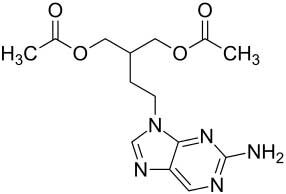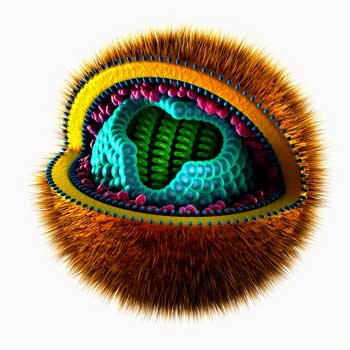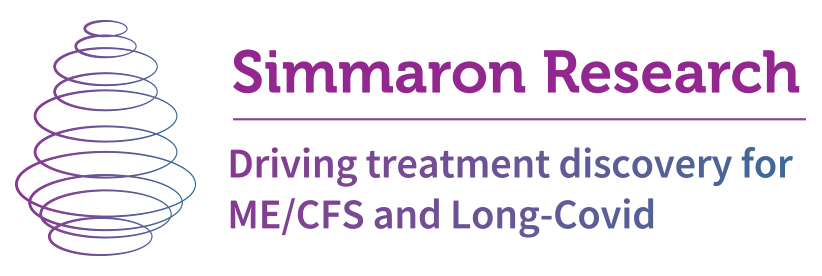Drug Combo in Pridgen Antiviral Fibromyalgia Trial Identified - Some Results Available
A lengthy article originating on the University of Alabama website and an abstract presented to the American College of Rheumatology Conference indicates that the two drugs Dr. William “Skip” Pridgen and virologist Carol Duffy PhD used in their Fibromyalgia antiviral trial were Famciclovir, better known as Famvir and Celexicob, best known as Celebrex.The report also indicates that Duffy found only herpes simplex - 1 viruses (HSV-1) in the gastrointestinal tissues of the FM patients. Neither of these drugs nor this type of herpes virus have been commonly used or associated with chronic fatigue syndrome. We also learned Pridgen discovered the two drug combo similar to the way Fluge/Mella uncovered Rituximab in chronic fatigue syndrome – by observation. Suspecting that herpes viruses might be to blame for the gastrointestinal issues in his patients, Pridgen started them off on Famvir. The drug helped but symptoms remained.After Pridgen noticed much greater improvement in the symptoms of the patients also put on Celebrex for their arthritis he combined the two drugs – for everyone.In the University of Alabama article, Duffy reported the improvement on the two drug combo was immense.
We also learned Pridgen discovered the two drug combo similar to the way Fluge/Mella uncovered Rituximab in chronic fatigue syndrome – by observation. Suspecting that herpes viruses might be to blame for the gastrointestinal issues in his patients, Pridgen started them off on Famvir. The drug helped but symptoms remained.After Pridgen noticed much greater improvement in the symptoms of the patients also put on Celebrex for their arthritis he combined the two drugs – for everyone.In the University of Alabama article, Duffy reported the improvement on the two drug combo was immense.
““The patients who took both drugs, however, came back and said everything was better. Their fibromyalgia was gone. Their chronic fatigue was gone. Their headaches were gone. All of these things had cleared up. When the first few patients approached him, he thought it was a fluke, but as more and more and more patients said the same thing, he knew it couldn’t be a coincidence.”
The Triad
That drug combo never been used in herpes virus infected patients before, but it made sense to Duffy. She knew that some herpes viruses increase the production of COX-2, a pro- inflammatory enzyme. While Famvir stopped the herpes viruses from replicating, Celebrex weakened the viruses, making them “unstable”. Since Celebrex also has some antiviral properties, the drug combo hit the virus in three ways.
Famvir
 Valtrex, Valcyte and Vistide are often used to treat herpesvirus infections in chronic fatigue syndrome but Famvir is rarely mentioned. (Dr. Dantini appears to use Famvir frequently to treat his ME/CFS/FM patients.)One of the reasons may be that Famvir is mostly used to treat herpes virus infections such as herpes simplex virus, herpes simplex virus 2 (genital herpes) and herpes labialis that have not been typically associated with ME/CFS.
Valtrex, Valcyte and Vistide are often used to treat herpesvirus infections in chronic fatigue syndrome but Famvir is rarely mentioned. (Dr. Dantini appears to use Famvir frequently to treat his ME/CFS/FM patients.)One of the reasons may be that Famvir is mostly used to treat herpes virus infections such as herpes simplex virus, herpes simplex virus 2 (genital herpes) and herpes labialis that have not been typically associated with ME/CFS.
The Newcomer - Herpes Simplex
Duffy scoured the gastrointestinal tissues of 45 patients for a virus. In the end it wasn’t EBV, cytomegalovirus or HHV-6 that showed up, but herpes simplex virus-1 (HSV-1) - the very virus she's been studying in her lab. (That's a little scary, but a technique called immunoblotting was used to ensure contamination had not occurred.)Herpes simplex virus is best known for its ability to cause cold sores and genital herpes, but according to a Wikipedia article can also cause herpetic whitlow, herpes gladiatorum, ocular herpes, cerebral herpes infection encephalitis, Mollaret's meningitis, neonatal herpes, and possibly Bell's palsy. HSV-1 can infect various organs in the body including the peripheral and central nervous systems, upper respiratory tract, and gastrointestinal tract. It may play a major role in Alzheimer’s. It’s able to deplete mitochondrial DNA. One article suggests herpes simplex virus may be better adapted to take advantage of poorly functioning natural killer cells than any other herpes virus.The group believes HSV-1 may be responsible for fibromyalgia, irritable bowel syndrome, chronic fatigue syndrome and perhaps other disorders. A video on the Innovative Med Concepts website indicates the virus can attack the facial, gastrointestinal and pelvic regions and that it ultimately takes up residence in the vagus nerve.It took Pridgen and Duffy about a year to raise the $4 million dollars for the 100 person plus phase II trial to assess the drug combo’s efficacy and safety. Along the way they enrolled a member of the drug team that brought Savella to market in FM, and a past president of Pfizer in their effort at Innovative Med Concepts. Noted FM researcher Daniel Clauw joined their advisory board.
HSV-1 can infect various organs in the body including the peripheral and central nervous systems, upper respiratory tract, and gastrointestinal tract. It may play a major role in Alzheimer’s. It’s able to deplete mitochondrial DNA. One article suggests herpes simplex virus may be better adapted to take advantage of poorly functioning natural killer cells than any other herpes virus.The group believes HSV-1 may be responsible for fibromyalgia, irritable bowel syndrome, chronic fatigue syndrome and perhaps other disorders. A video on the Innovative Med Concepts website indicates the virus can attack the facial, gastrointestinal and pelvic regions and that it ultimately takes up residence in the vagus nerve.It took Pridgen and Duffy about a year to raise the $4 million dollars for the 100 person plus phase II trial to assess the drug combo’s efficacy and safety. Along the way they enrolled a member of the drug team that brought Savella to market in FM, and a past president of Pfizer in their effort at Innovative Med Concepts. Noted FM researcher Daniel Clauw joined their advisory board.
Conference Abstract Provides Results
An abstract presented at the ACR conference yesterday suggested the drug combo produced strong improvement in some measures and not as strong improvement in others. The changes in pain using the revised Fibromyalgia Impact Form appeared impressive (p< 001) as did changes in function and symptoms (p<.004) and overall impact (p<.003). Fatigue was significantly improved but less so (p<.02). However, only 33% of patients (vs 19% of those not on it) met the criteria for a secondary measure called the Global Impression of Change Scale which asked about changes in a person’s activity, limitation, symptoms, emotions and quality of life. It‘s not clear how to parse the more impressive results in some of the tests with less impressive results in the last one.The drug combination was judged very safe with more adverse events found in the placebo group than in the patients taking the drug.
However, only 33% of patients (vs 19% of those not on it) met the criteria for a secondary measure called the Global Impression of Change Scale which asked about changes in a person’s activity, limitation, symptoms, emotions and quality of life. It‘s not clear how to parse the more impressive results in some of the tests with less impressive results in the last one.The drug combination was judged very safe with more adverse events found in the placebo group than in the patients taking the drug.
Improving Efficacy Efforts Underway
If the trial wasn’t a complete win it nevertheless produced significant improvements in a notoriously difficult to treat illness. Since fibromyalgia, like chronic fatigue syndrome, is believed to be a quite heterogeneous illness asking any drug or drug combo to be effective in everyone is unrealistic.
Phase III Trial Will Tell the Tale
 Designed to assess basic aspects of efficacy and safety, Phase II trials are not the last word in efficacy. As the Pridgen/Duffey team proceeds to the Phase III trial they're exploring several ways to bump up efficacy. Duffy is working on diagnostic tests to identify which FM patients are most likely to benefit from the combo, and is doing toxicology tests to determine if higher doses are feasible. The optimum doses of the drug combo will also be determined in the Phase III trial. Expect efficacy rates to rise.
Designed to assess basic aspects of efficacy and safety, Phase II trials are not the last word in efficacy. As the Pridgen/Duffey team proceeds to the Phase III trial they're exploring several ways to bump up efficacy. Duffy is working on diagnostic tests to identify which FM patients are most likely to benefit from the combo, and is doing toxicology tests to determine if higher doses are feasible. The optimum doses of the drug combo will also be determined in the Phase III trial. Expect efficacy rates to rise.
Big Trial Ahead
Next up is the big third phase trial - a jaw dropping $50-100 million trial the FDA needs in order to approve the drug combo for the treatment of fibromyalgia.No one is satisfied with the state of fibromyalgia treatment - and few have looked to the immune system or to pathogens. If the results of this trial are not breathtaking - they are still very good - and will hopefully improve as the therapy becomes better targeted. They should begin to prompt a revaluation of what's going on FM.The publication of the study is probably just around the corner….
